Resources
About Us
Seed Coating Market Size, Share & Forecast by Type (Polymers, Colorants, Minerals/Pumice), Active Ingredients (Protectants, Nutrients, Phytoactive Promoters), Crop Type (Cereals and Grains, Oilseeds and Pulses, Fruits & Vegetables) - Global Forecast to 2032
Report ID: MRAGR - 104737 Pages: 172 Mar-2025 Formats*: PDF Category: Agriculture Delivery: 2 to 4 Hours Download Free Sample ReportThe key factors driving the growth of this market are increasing demand for low-cost crop protection solutions, technological advancements, focus on seed treatment, decline in arable lands and necessity to enhance crop productivity, growing demand for low-cost alternatives to hybrid and GM seeds, and increasing farmers’ preference for seed-enhancing products. In addition, the emergence of biodegradable seed coatings provides significant growth opportunities for the stakeholders operating in this market. Moreover, precision agriculture and the integration of biologicals in seed coatings are prominent trends in the seed coating market.
Agricultural producers are continuously seeking cost-effective strategies to optimize crop performance while minimizing input expenses, making seed coating technologies an increasingly attractive solution. Seed coating technologies offer a significantly more economical approach to crop protection compared to traditional postemergence chemical treatments. By integrating protective mechanisms directly into the seed treatment, farmers can reduce overall agricultural input costs while achieving more precise and targeted crop protection. The economic efficiency of seed coatings stems from their ability to provide comprehensive protection during the most vulnerable early growth stages, potentially reducing the need for multiple chemical applications throughout the crop cycle.
The global agricultural landscape is increasingly characterized by economic pressures, fluctuating commodity prices, and the need to maximize productivity with limited resources. Seed coatings represent a strategic solution that allows farmers to achieve multiple objectives simultaneously – protecting seeds, enhancing nutrition, and managing potential crop threats – through a single, cost-effective treatment. This approach is particularly critical in emerging agricultural markets where farmers have limited financial resources and must make strategic decisions about crop protection investments.
Technological innovations have further enhanced the cost-effectiveness of seed coating solutions. Advanced coating technologies now enable more precise, targeted treatments that can reduce overall chemical usage by up to 30-40% compared to traditional crop protection methods. These innovations include the development of multi-functional coatings that combine disease protection, pest management, and nutritional support in a single treatment, creating significant economic value for agricultural producers.
Regulatory environments and environmental considerations are also driving the demand for low-cost crop protection solutions. Seed coatings offer a more environmentally friendly alternative to traditional crop protection methods, reducing chemical runoff and minimizing environmental impact while providing comprehensive crop protection. This approach aligns with global trends towards more sustainable agricultural practices and can help farmers meet increasingly stringent environmental regulations.
The economic benefits extend beyond immediate input cost reductions. Seed coatings can potentially improve crop yields, reduce crop losses, and enhance overall agricultural productivity. By providing protection during critical early growth stages, these technologies can help farmers mitigate risks associated with environmental stresses, pest pressures, and disease challenges, ultimately contributing to more stable and predictable agricultural outcomes.
The rising focus on seed treatment is a key driver propelling the growth of the seed coating market, as modern agriculture increasingly recognizes seed enhancement as a critical first step in crop production. This trend reflects a fundamental shift in farming practices, where protecting and optimizing seeds before planting is proving more efficient than addressing problems later through foliar sprays or soil treatments. Seed coatings serve as a targeted delivery system for crop protection agents, nutrients, and growth promoters, allowing precise application while minimizing environmental impact. The agricultural industry's growing emphasis on preventative plant care rather than reactive treatments has made seed coatings indispensable, particularly as farmers face mounting pressures from climate variability, regulatory restrictions on field-applied chemicals, and the need to maximize yields from every seed.
This focus on seed treatment is accelerating due to several factors. First, the proven economic benefits - studies show coated seeds can improve crop establishment rates by 15-25% while reducing overall pesticide usage. Second, the development of advanced coating technologies that combine multiple functions (protection + nutrition + stress tolerance) in single applications. Third, the expansion of high-value hybrid and genetically modified seeds, where coatings help protect significant seed investments. Additionally, global initiatives promoting sustainable agriculture are driving adoption of seed-applied biologicals as alternatives to chemical treatments. The seed coating market is further benefiting from precision farming trends, where treated seeds integrate seamlessly with automated planting systems. As agricultural input strategies continue moving toward early-intervention approaches, the seed coating market is positioned for sustained growth, with innovation increasingly focused on multi-functional coatings that address the complex challenges of modern crop production.
The emergence of biodegradable seed coatings presents a major growth opportunity for players in the seed coating market, as global agricultural practices shift toward sustainability, regulatory compliance, and environmental responsibility. With increasing restrictions on synthetic polymers and chemical-based coatings, there is a growing demand for eco-friendly alternatives that enhance seed performance while minimizing soil and water contamination. This shift provides seed coating manufacturers the chance to develop and commercialize biodegradable solutions that align with evolving consumer preferences, government policies, and sustainability goals.
Companies investing in biodegradable seed coating technologies can differentiate themselves by offering products made from natural polymers, starch-based compounds, and plant-derived biopolymers, which break down naturally without leaving harmful residues. The rising adoption of organic farming and regenerative agriculture further amplifies the demand for these coatings, creating a lucrative market segment. Additionally, advancements in biotechnology and nanomaterials allow for the integration of biostimulants, microbial inoculants, and controlled-release nutrients within biodegradable coatings, enhancing their effectiveness and market appeal.
Furthermore, regulatory incentives and government support for sustainable agricultural practices are encouraging farmers to transition toward environmentally friendly seed treatments, opening new avenues for product development and expansion. Companies that prioritize R&D, strategic partnerships, and sustainable innovation will be well-positioned to capture market share, expand into new regions, and establish themselves as leaders in the rapidly evolving biodegradable seed coating sector.
Based on material type, the seed coating market is segmented into polymers, colorants, binders, minerals/pumice, and other material types. In 2025, the polymers segment is expected to account for the largest share of the global seed coating market. The large market share of this segment is primarily attributed to the growing demand for polymers in seed coating due to their ability to enhance the seed germination process and provide protection against pests, diseases, drought, and adverse soil conditions. Moreover, the high acceptance of seed-coating polymers is attributed to their low viscosity and water-based nature, which promotes faster seed germination. Seed-coating polymers keep seeds damp/moist, provide an unwavering temperature, and suppress seeding stress from drying field conditions.
Moreover, this segment is also poised to record a higher CAGR during the forecast period of 2025–2032, owing to the rising adoption of polymeric materials in farming because of their high usefulness in binding strength and the convenience of seed pouring.
Based on active ingredients, the global seed coating market is segmented into protectants, nutrients, phytoactive promoters, and other active ingredients. In 2025, the protectants segment is expected to account for the largest share of the global seed coating market. The large market share of this segment is primarily attributed to the growing incidence of soilborne pests and diseases and the need for a safe and controlled application of plant protectants. Seed coating is an effective carrier of plant protectants, such as pesticides. In addition, the application of plant protectants through seed coating provides benefits such as precise placement on the target, minimum toxicant requirements, minimum impact on the environment, and minimum exposure to wildlife and beneficial organisms. Moreover, this segment is also projected to register the highest CAGR during the forecast period of 2025–2032.
Based on crop type, the global seed coating market is segmented into cereals & grains, oilseeds & pulses, fruits & vegetables, flowers & ornamentals, and other crop types. In 2025, the cereals & grains segment is expected to account for the largest share of the global seed coating market. The large share of this segment is mainly attributed to the growing need to increase cereal & grain production, minimize cereal & grain loss due to pests and diseases, and the increasing use of cereal & grains in animal feed, biofuel, and starch & ethanol production.
However, the fruits & vegetables segment is projected to register the highest CAGR during the forecast period of 2025–2032. The rapid growth of this segment is mainly due to the growing fruit & vegetable production globally, enhanced seed production, and increasing demand for high-quality fruit and vegetable produce.
Based on geography, the seed coating market is segmented into North America, Europe, Asia-Pacific, Latin America, and the Middle East & Africa. In 2025, North America is expected to account for the largest share of the seed coating market. This region’s large market share is attributed to region’s highly developed agriculture sector, advanced farming technologies, and strong presence of key agribusiness players. The U.S., in particular, leads the market due to widespread adoption of precision agriculture, increasing demand for high-yielding crops, and strict regulatory frameworks promoting treated seeds. Additionally, large-scale commercial farming, extensive research & development activities, and government support for seed enhancement technologies contribute to North America’s leadership in the market.
Moreover, factors such as an organized distribution chain for crop protection chemicals, the growing awareness about sustainable crop production techniques to lessen the environmental impact of high residue, and the presence of a large number of stakeholders further support the growth of the seed coating market in the region.
However, Asia-Pacific is slated to register the fastest growth rate during the forecast period of 2025– 2032, owing to rising population, increasing food demand, and rapid adoption of modern agricultural techniques in countries like China, India, and Southeast Asian nations. The shift from traditional to high-efficiency farming has led to a greater need for seed enhancement technologies that improve germination, nutrient uptake, and disease resistance. Additionally, government initiatives promoting agricultural productivity, investments in smart farming technologies, and the rising awareness about seed treatments are accelerating market expansion. However, challenges such as limited farmer awareness and regulatory variations across countries may impact the pace of adoption.
The report offers a competitive analysis based on an extensive assessment of the leading players’ product portfolios and geographic presence and the key growth strategies adopted by them over the past four years. Some of the key players operating in the seed coating market are BASF SE (Germany), Syensqo S.A. (Belgium), Chromatech Incorporated (Netherlands), Cistronics Innovations Pvt. Ltd. (India), Clariant International Ltd. (Switzerland), Croda International Plc. (U.K.), Germains Seed Technology (U.S.), Milliken & Company (U.S.), Sensient Technologies (U.S.), and Precision Laboratories, LLC (U.S.).
|
Particulars |
Details |
|
Number of Pages |
172 |
|
Format |
|
|
Forecast Period |
2025–2032 |
|
Base Year |
2024 |
|
CAGR (Value) |
7.7% |
|
Market Size (Value)in 2025 |
USD 2.51 Billion |
|
Market Size (Value) in 2032 |
USD 4.23 Billion |
|
Segments Covered |
By Material Type
By Active Ingredient
By Crop Type
|
|
Countries Covered |
North America (U.S., Canada), Europe (Germany, France, U.K., Russia, Spain, and Rest of Europe), Asia-Pacific (China, India, Japan, Australia, and Rest of Asia-Pacific), Latin America (Brazil, Mexico, Argentina, and Rest of Latin America), and the Middle East & Africa. |
|
Key Companies |
BASF SE (Germany), Syensqo S.A. (Belgium), Chromatech Incorporated (Netherlands), Cistronics Innovations Pvt. Ltd. (India), Clariant International Ltd. (Switzerland), Croda International Plc. (U.K.), Germains Seed Technology (U.S.), Milliken & Company (U.S.), Sensient Technologies (U.S.), and Precision Laboratories, LLC (U.S.). |
The global seed coating market size was valued at $2.34 billion in 2024.
The market is projected to grow from $2.51 billion in 2025 to $4.23 billion by 2032.
The seed coating market analysis indicates substantial growth, with projections indicating that the market will reach $4.23 billion by 2032 at a compound annual growth rate (CAGR) of 7.7% from 2025 to 2032.
The key companies operating in this market include BASF SE (Germany), Syensqo S.A. (Belgium), Chromatech Incorporated (Netherlands), Cistronics Innovations Pvt. Ltd. (India), Clariant International Ltd. (Switzerland), Croda International Plc. (U.K.), Germains Seed Technology (U.S.), Milliken & Company (U.S.), Sensient Technologies (U.S.), and Precision Laboratories, LLC (U.S.).
Precision agriculture and the integration of biologicals in seed coatings are prominent trends in the seed coating market.
By material type, the polymers segment is forecasted to hold the largest market share during 2025-2032
By active ingredient, the protectants segment is expected to dominate the market during 2025-2032
By crop type, the cereals & grains segment is expected to dominate the market during 2025-2032
By geography, North America is expected to hold the largest share of the market during 2025-2032.
By region, North America is expected to hold the largest share of the seed coating market in 2025. However, the Asia-Pacific region is expected to witness the fastest growth rate during the forecast period, driven by the rising population, increasing food demand, and rapid adoption of modern agricultural techniques in countries like China, India, and Southeast Asian nations.
The increasing demand for low-cost crop protection solutions, technological advancements, focus on seed treatment, decline in arable lands and necessity to enhance crop productivity, growing demand for low-cost alternatives to hybrid and GM seeds, and increasing farmers’ preference for seed-enhancing products drives the growth of this market.
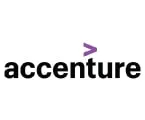
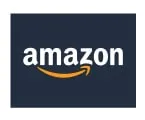
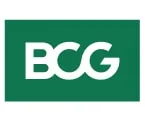
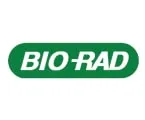
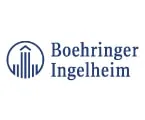
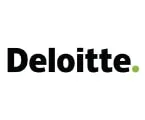
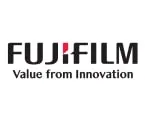
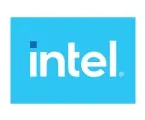
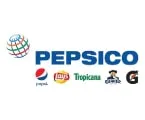
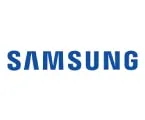
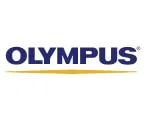
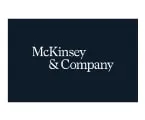
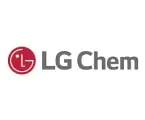
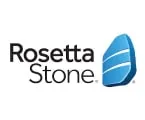
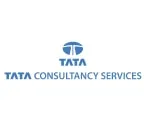
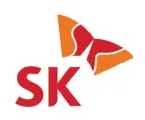
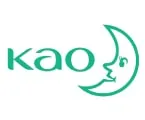
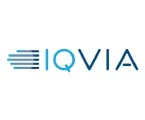
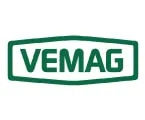
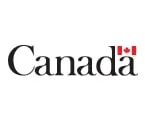
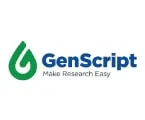
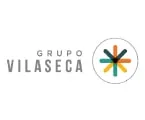
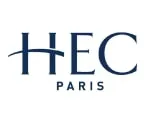
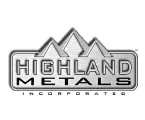
Published Date: Feb-2024
Published Date: Aug-2022
Please enter your corporate email id here to view sample report.
Subscribe to get the latest industry updates